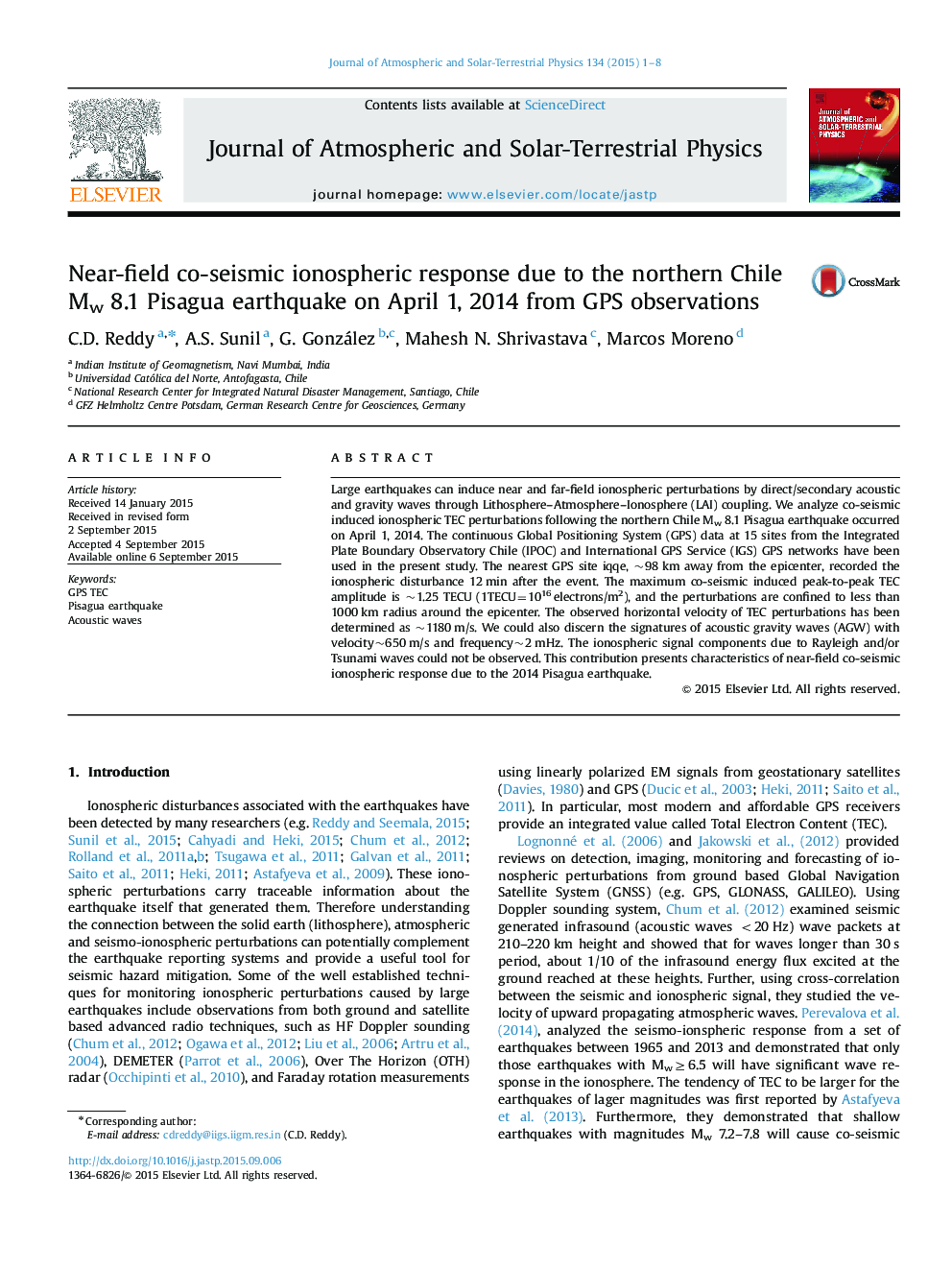| Article ID | Journal | Published Year | Pages | File Type |
|---|---|---|---|---|
| 1776359 | Journal of Atmospheric and Solar-Terrestrial Physics | 2015 | 8 Pages |
•Ionspheric perturbations are caused by shock acoustic waves of Mw 8.1 Pisagua earthquake.•Average horizonatal propagation velocity of the acoustic wave has been estimated as 1180 m/s.•The coseismic ionospheric peak-to-peak signal found to be ~1.25 TECU and confined to ~1000 km radius.•Spatial distribution of the ionospheric response discussed.•Feasibility of ionospheric response from Rayleigh and Tsunami waves discussed.•The primary acoustic waves and the secondary gravity waves are discerned using wavelet spectrograms.
Large earthquakes can induce near and far-field ionospheric perturbations by direct/secondary acoustic and gravity waves through Lithosphere–Atmosphere–Ionosphere (LAI) coupling. We analyze co-seismic induced ionospheric TEC perturbations following the northern Chile Mw 8.1 Pisagua earthquake occurred on April 1, 2014. The continuous Global Positioning System (GPS) data at 15 sites from the Integrated Plate Boundary Observatory Chile (IPOC) and International GPS Service (IGS) GPS networks have been used in the present study. The nearest GPS site iqqe, ~98 km away from the epicenter, recorded the ionospheric disturbance 12 min after the event. The maximum co-seismic induced peak-to-peak TEC amplitude is ~1.25 TECU (1TECU=1016 electrons/m2), and the perturbations are confined to less than 1000 km radius around the epicenter. The observed horizontal velocity of TEC perturbations has been determined as ~1180 m/s. We could also discern the signatures of acoustic gravity waves (AGW) with velocity~650 m/s and frequency~2 mHz. The ionospheric signal components due to Rayleigh and/or Tsunami waves could not be observed. This contribution presents characteristics of near-field co-seismic ionospheric response due to the 2014 Pisagua earthquake.
